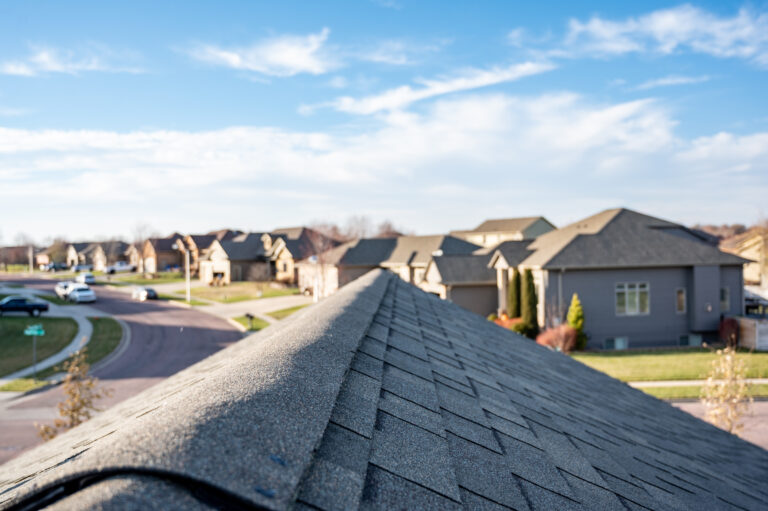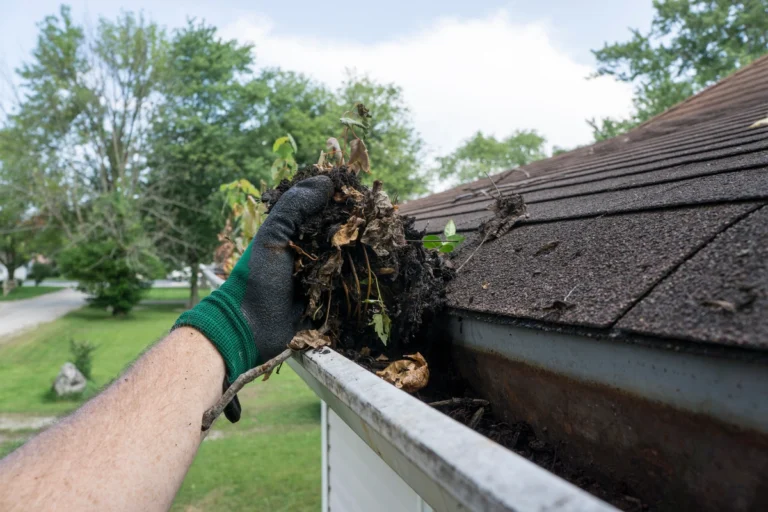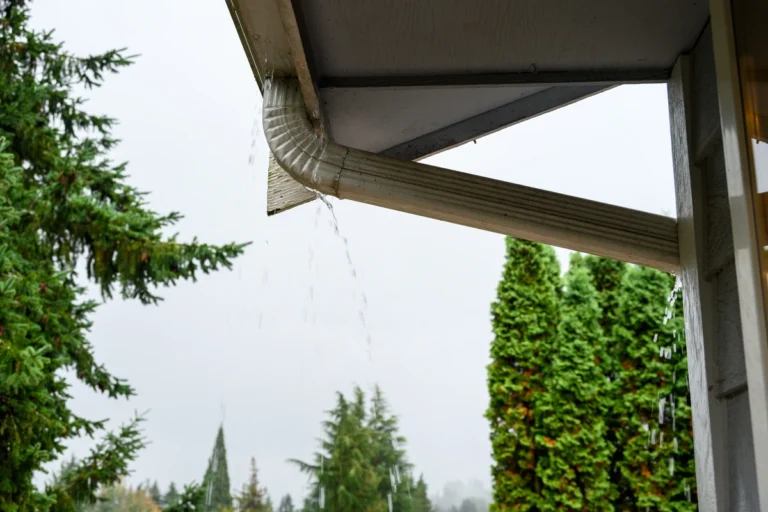Hail can do a number on roofs, causing damage and leaks that can have a long-term impact on your home. If your roof has received hail damage, you should file an insurance claim to access the benefits that may pay for your roof repairs.
We are here to discuss filing an insurance claim for roof hail damage. We will consider how to diagnose roof hail damage, the insurance claims process, and what you can expect from repairs. Read on to learn more about hail damage and taking advantage of your home insurance benefits.
What is Roof Hail Damage?
Hail damage occurs when a hail storm hits home with enough intensity to cause permanent damage to exterior components, like shingles, gutters, and other fixtures.
Hail Storms
Hail storms occur in most climates across the US, affecting millions each year. In 2020 alone, there were 4,611 major hail storms across the US. In 2017, over 10.7 million properties received damage from at least one major hail storm.

Hail usually forms during thunderstorms when up-drafting winds lift rain drops above the atmospheric freezing level. The result is frozen hailstones measuring anywhere from 1-4 inches in diameter with the potential to cause significant damage to homes and other properties.
Roof Damage
While any part of a home’s exterior can undergo hail damage, roofs tend to bear the brunt of wind and hail damage. Roof hail damage can take many forms, and it is not always clear whether it was hail or other factors that caused it.
Roof hail damage can be either cosmetic or functional. Cosmetic damage is surface damage that is noticeable to the naked eye but does not affect the ability of your roof to protect your home from the elements. On the other hand, functional damage affects your roof’s structure or practical ability to protect your home.
The most common signs of roof hail damage are:
Leaks
Split or broken singles
Shingle cracks
Impact marks or dents
Filing an Insurance Claim
If you notice any of the above signs of hail damage to your roof, it is likely time to file a hail damage insurance roof claim. Insurance exists to protect your home from damage and catastrophes and to ensure it continues looking and performing its best for years to come.
Hail damage is precisely the kind of catastrophe for which insurance exists, and homeowners should not hesitate to take advantage of the benefits they have paid. If your roof is functionally damaged and you do not file an insurance claim, the damage will only worsen over time if not repaired, or you will be stuck with the full cost of repairs if you do not file a claim.
Review Policy
The first step in the hail damage claims process is to review your insurance policy to see what your homeowners insurance covers. While most insurance covers hail damage, not all do, and some stipulate the amount of time following a storm you have to file a claim. Become familiar with your policy; know what it covers and when it is appropriate to file a claim for hail damage.
Document Damage
Next, document the damage. If you can safely ascend your home, take photographs of all the damaged spots you see, paying attention to the types of damage mentioned above.
File Claim
After documenting the damage, it’s time to file a claim. Contact your homeowners insurance provider by phone, email, or web form as soon as you notice signs of hail damage to avoid claim denial for waiting too long to file. It is also vital to file a claim promptly if many in your area were affected by the hailstorm; insurance company agents can become swamped when they receive many claims at once, causing delays in claims processing.

Your insurance provider will ask you questions about the nature and extent of damage and problems it is causing in your home. They will also likely ask for the photographs you have taken to view the hail damage for themselves. They should then explain what to expect from the claims process and schedule a meeting with an insurance company adjuster who can further assess the damage in person.
Get Estimates
The next step in the process should occur after you have filed a claim but before you meet with the homeowners insurance adjuster. Get repair estimates from home contractors. At a minimum, you should get one estimate, but it is best practice to collect at least three estimates to be sure the damage assessment is thorough, and you’re getting the best value from repairs to your home.
Be sure the contractor thoroughly assesses your home, checking not just your roof but also your windows, gutters, fences, A/C unit, and outbuildings. If you have leak damage inside your home, show it to the contractor so they can include interior repairs in their estimate.
During this stage in the insurance claims process, homeowners sometimes discover the cost of repairs is under or near their deductible amount. If this is the case, it may be best to cancel your claim and pay for repairs out-of-pocket to avoid future insurance rate increases.
Adjuster Meeting
If estimates exceed your deductible amount, you are ready to move on to the next step in the insurance company claims process, meeting with the adjuster. During the estimates step, identify a contractor you trust to perform your roof repairs and bring a representative from that company to your adjuster meeting. This way, an expert is there to discuss their assessment with the adjuster and ensure your repairs are covered in their totality.

You may need to negotiate with the adjuster regarding repairs to your home. If you are unsatisfied with your adjuster’s assessment, let them know and request coverage for all damage to your home. Have your contractor intercede with the adjuster if necessary, ensuring all damage is accounted for and covered.
You have two options if you cannot agree with your insurance adjuster. First, you can hire an independent adjuster to conduct an assessment, or if you do not wish to pursue that option, you can contact an attorney to file an insurance claims dispute with the insurance commissioner for your state. Remember that these two options will cost you money, so only pursue them if necessary.
Receive Payment
Once you agree with the adjuster, you’re ready to receive payment. Your homeowners insurance company will likely pay you directly, although they sometimes will issue payment to the contractor. You may also expect payments to come in installments, some before the work is completed and some after work has been done.
Repairs
The final step is to have repairs done. Since you’ve already selected a contractor you trust, contact them to schedule the repairs to your home and set payment terms based on what you expect from your insurance payout.
Conclusion
Roof hail damage can occur anywhere, leading to costly repairs and sometimes lengthy reconstruction. Use the tips in this article to diagnose roof hail damage and file an insurance claim for roof hail damage. Once you’ve been through the process, you should have a sturdy, restored roof that will protect your home for years.






